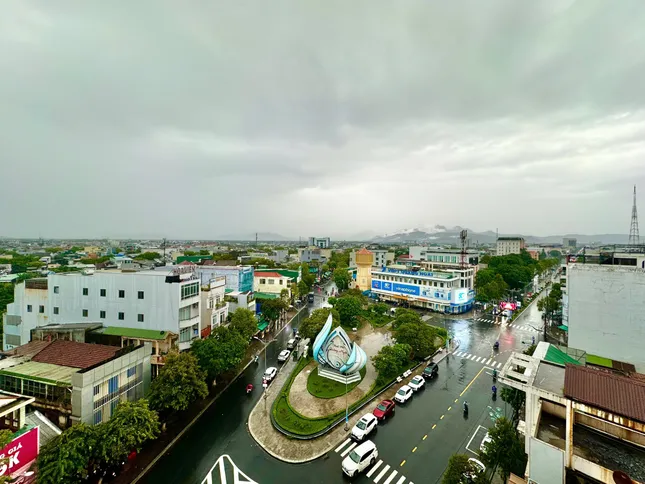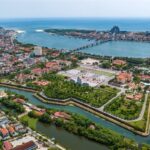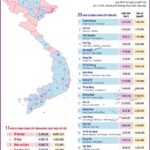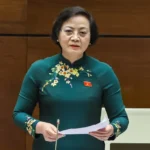On June 13, the Quang Ngai Provincial Party Committee announced the completion of two important commune-level proposals: the proposal to merge, establish, and reorganize communes, and the proposal to establish new communal Party committees. Following these changes, Quang Ngai now comprises 56 administrative units at the commune level, including 6 wards, 49 communes, and the Ly Son Special Administrative Unit.
In terms of population and area, the smallest commune after the reorganization is Ca Dam, with a population of 4,336. It was established by merging the entire population and area of Tra Tan commune and four villages of Tra Bui commune in Tra Bong district. On the other hand, the commune with the largest population is Binh Son, with 89,058 people. It was formed by merging seven communes of Binh Son district: Binh Thanh, Binh Chanh, Binh Duong, Binh Nguyen, Binh Trung, Binh Long, and Chau O town. Binh Son is also the most populous commune in the new province of Quang Ngai, which will be formed by the merger of Quang Ngai and Kon Tum.
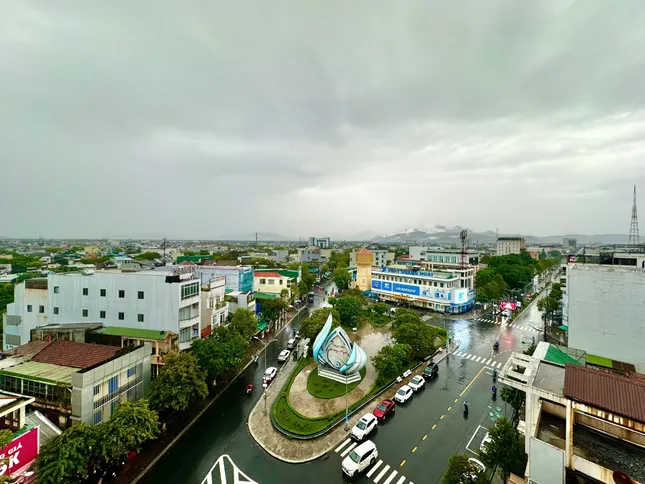
After the administrative reorganization, Cam Thanh Ward (Quảng Ngãi City) has the smallest area.
The commune with the largest area in Quang Ngai after the merger is Ba To, covering over 274 square kilometers. It was formed by merging three communes: Ba To, Ba Nam, and Ba Le in Ba To district. Conversely, the administrative unit at the commune level with the smallest area is Cam Thanh Ward, spanning over 7.9 square kilometers. It was established by merging four wards: Nguyen Nghiem, Tran Hung Dao, Nghia Chanh, and Chanh Lo in Quang Ngai City.
To ensure the smooth and efficient functioning of the new communes upon the official dissolution of the district level and the establishment of a two-tier local government, Quang Ngai has prepared necessary conditions regarding headquarters, staffing, and human resources. To maintain stability in the new communes, Quang Ngai has also finalized a plan to assign 40 provincial and district-level officials managed by the Provincial Party Committee’s Standing Board to work in the communes. These officials will hold key positions, including commune Party Committee Secretaries (21 people), Permanent Vice Secretaries of the Commune Party Committee (4 people), Chairpersons of the Commune People’s Committees (8 people), and Vice Chairpersons of the Commune People’s Committees (7 people).

Bui Thi Quynh Van, Secretary of Quang Ngai Provincial Party Committee, speaks during a working session with Kon Tum Provincial Party Committee on the merger.
Following the reorganization, Quang Ngai has 4,658 commune-level staff members. The administrative units at the commune level will be delegated and empowered to handle over 1,026 tasks and a significant volume of work. Regarding headquarters, the province of Quang Ngai has considered and provided feedback on a plan to utilize a total of 170 commune-level headquarters, retaining 135 and allocating 35 surplus headquarters for other purposes.
On June 21, the province is expected to announce the leadership of the new communes, and by June 25, the relocation of headquarters will be completed, with a five-day trial operation before the official launch on July 1. After the merger of Quang Ngai and Kon Tum, the new province of Quang Ngai will cover an area of over 14,800 square kilometers, ranking fifth in the country, with a population of over 2.16 million. It will border Da Nang and Gia Lai and share borders with Laos and Cambodia. The new province of Quang Ngai will comprise 96 administrative units at the commune level (9 wards, 86 communes, and 1 special administrative unit), with its administrative center in Quang Ngai City. When the new province officially operates, all agencies and units within the political system of the new province will have an office in Kon Tum. The Quang Ngai Provincial Party Committee of the new province will consist of 71 members, including 17 members in the Standing Board.
The Ultimate Guide to the 34 Provincial Administrative Units: Unlocking Effective Governance
As of June 12, 2025, there are 34 administrative units at the provincial level across the country, consisting of 28 provinces and 6 cities. Of these, 19 provinces and 4 cities were formed after the reorganization, while 11 provinces and cities remained unchanged.
What Will Vietnam Look Like After Provincial and Municipal Mergers?
With an overwhelming majority of 461 out of 465 delegates in favor, the National Assembly, on the morning of June 12, 2025, officially passed a historic resolution on the merger of provincial-level administrative units. So, how many provinces and cities are there in our country now?

